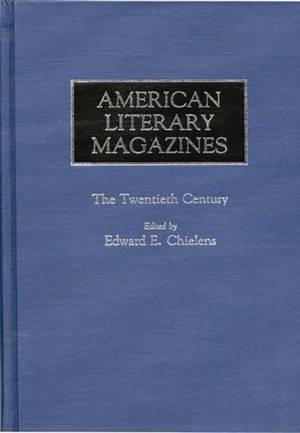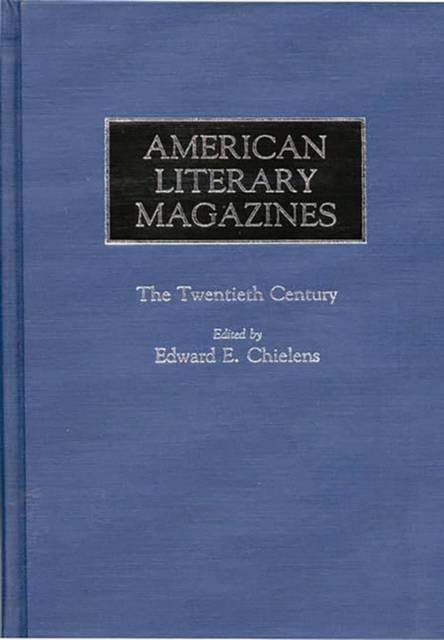
- Retrait gratuit dans votre magasin Club
- 7.000.000 titres dans notre catalogue
- Payer en toute sécurité
- Toujours un magasin près de chez vous
- Retrait gratuit dans votre magasin Club
- 7.000.0000 titres dans notre catalogue
- Payer en toute sécurité
- Toujours un magasin près de chez vous
Description
The history of modern American literature is inextricably tied to the history of the literary magazine. Conversely, in the individual histories of these magazines can be gleaned highlights of literary activity and insights on the writers and editors in the forefront. The literary magazines of the twentieth century, most of them known as littles because of small budgets and circulation and short lives, number in the thousands. Some, like the venerable New Yorker, have enjoyed wide circulation for well over half a century; others, like The Fugitive, published in Nashville, Tennessee, in the early 1920s, were regional and/or experimental and short-lived. Of these thousands, editor Edward E. Chielens has selected seventy-six of the most significant for description and analysis in individual historical essays. An additional one hundred magazines are briefly profiled in an appendix. Forty-three scholars and writers contributed to this volume.
Following the pattern established in Chielens's earlier complementary volume, American Literary Magazines: The Eighteenth and Nineteenth Centuries, the magazine essays also provide appended data on information sources and publishing history. The volume introduction discusses the characteristics of different types of literary magazines in the twentieth century and their sponsoring organizations or individuals as well as the influence on their development of leading literary figures such as Ezra Pound and H. L. Mencken. This discussion is bolstered by a chronological appendix to the volume presenting highlights in the history of literary magazines in the perspective of events in literary history. An additional appendix provides a directory of major collections of literary magazines in the United States and Canada with descriptions of their holdings.Spécifications
Parties prenantes
- Auteur(s) :
- Editeur:
Contenu
- Nombre de pages :
- 488
- Langue:
- Anglais
- Collection :
Caractéristiques
- EAN:
- 9780313239861
- Date de parution :
- 24-08-92
- Format:
- Livre relié
- Format numérique:
- Genaaid
- Dimensions :
- 163 mm x 245 mm
- Poids :
- 875 g

Les avis
Nous publions uniquement les avis qui respectent les conditions requises. Consultez nos conditions pour les avis.






